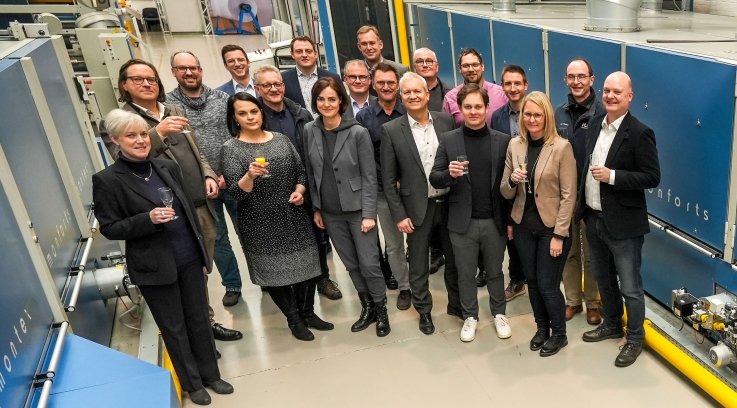
Instant detection with Fabritell
Acquired project data will pave the way for scaling up the technology to an industrial level.

7th August 2024
Innovation in Textiles
|
Dornbirn, Austria
At the forthcoming Dornbirn-GFC conference in Austria from September 11-13, Maike Rabe, head of the FTB research institute at Hochschule Niederrhein, will provide the latest news from the German WasserSTOFF Project.
This project is being led by finishing machine leader Monforts and aims to develop a hydrogen-heated stenter frame that in the future will enable the carbon-neutral finishing of textiles.
“The usual operation of stenter frames with natural gas currently leads to considerable CO2 emissions worldwide,” Rabe explains. “Emissions can be significantly reduced by the alternative use of hydrogen converted through the use of electrical energy from renewable sources such as wind or solar – so-called green hydrogen.”
The project is investigating the effects of using hydrogen or hydrogen/natural gas mixtures instead of natural gas alone as the fuel for textile drying and fixation.
Mixing system
This requires the development and adaptation of the burners, including a gas mixing system, which controls the thermoprocess.
The mode of operation is initially being tested and evaluated on a gas-powered and burner-modified technical dryer with a power class of 40 KW per burner at Niederrhein’s Textile Technology Centre.
Specific textile coating and finishing/dyeing processes have been selected for drying and fixation and in order to optimise the processes and adapt the finishing recipes, tests are being carried out to evaluate textile product quality, exhaust gas composition and energy balance.
In addition, a dynamic tool to evaluate the climate footprint of the drying system is being developed. This is taking into account factors such as the availability and origin of the required quantity of hydrogen (including in-house production and development of the electricity mix for hydrogen production) as well as hydrogen admixtures in the natural gas network – all based on existing standards and the Greenhouse Gas Protocol.
This data is forming the basis for the scaling-up of the technology to industrial level.
In addition to Hochschule Niederrhein and Monforts, the project also includes the companies Pleva and Nova Textil-Beschichtung and is supported by the German Federal Ministry for Economic Affairs and Climate Action (BMWK).
Maike Rabe’s Dornbirn presentation will be on Friday September 13th at 9.25.

Business intelligence for the fibre, textiles and apparel industries: technologies, innovations, markets, investments, trade policy, sourcing, strategy...
Find out more